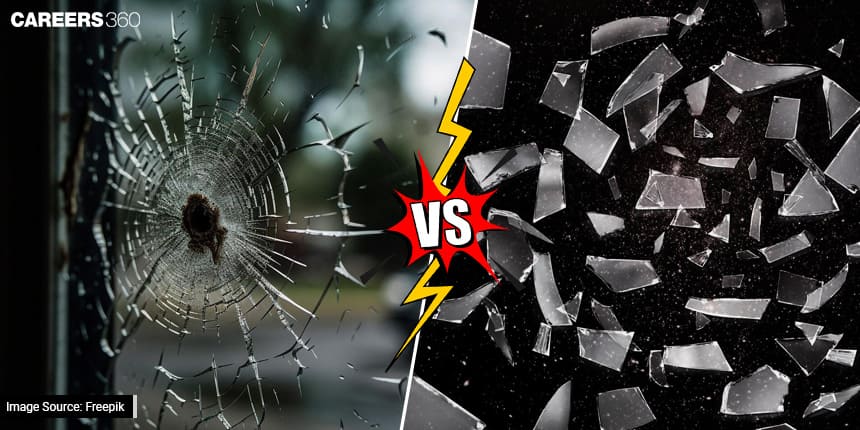Bulletproof Glass: Its Composition And Distinction From Ordinary Glass
Bulletproof glass, a marvel of modern engineering, stands as a testament to our relentless pursuit of safety and security. Unlike its commonplace counterpart, normal glass, bulletproof glass is meticulously crafted to withstand the impact of bullets and other sharp objects or projectiles.

In this article, we will go through the intricate details of how bulletproof glass is made and explore the differences that set it apart from regular glass.
Composition of Normal Glass
Traditional glass, the cornerstone of countless architectural wonders, is primarily composed of silica (derived from sand), soda ash, and limestone. Through a process of heating and moulding, these raw materials are transformed into a transparent substance that, while solid, is inherently fragile.
The Fragile Nature of Ordinary Glass
Normal glass, when subjected to force or pressure, breaks into sharp and potentially dangerous shards. Its fragility is a characteristic that makes it ill-suited for applications where safety and security are of extreme importance, especially in environments where the risk of ballistic threats exists.
Bulletproof Glass as a Composite Material
In stark contrast, bulletproof glass is a composite material made of many layers to create a formidable barrier against projectiles. The basic principle involves laminating multiple sheets of glass with interlayers of flexible, tough materials. These interlayers often consist of polycarbonate, acrylic, or other plastics, each chosen for its specific properties.
Lamination Process
The lamination process is the most important step in the creation of bulletproof glass. Unlike the single, solid pane of normal glass, bulletproof glass undergoes a meticulous bonding process. Layers of glass and other materials are joined together using a specialised adhesive. This lamination not only reinforces the structural integrity of the glass but also ensures that it does not shatter upon impact.
Also Read | Understanding The Physics Of Heat Transfer In Thermos Flasks
Layering for Impact Absorption
The layers in bullet-resistant glass play a crucial role in absorbing and dispersing the energy from an impact. While glass provides hardness, materials like polycarbonate offer flexibility. The combination of these layers is carefully calibrated to create a synergy that can withstand high-velocity projectiles.
The Role of Polycarbonate
Polycarbonate, a tough and flexible plastic, is a key component of many bulletproof glass formulations. Its ability to deform upon impact is instrumental in absorbing and dispersing the energy generated by a bullet. This flexibility complements the hardness of glass, resulting in a composite material that offers a higher level of protection.
Thickness
In the making of bulletproof glass, thickness is a critical factor. Unlike normal glass, where thickness may be chosen for aesthetic reasons, the thickness of bulletproof glass is directly related to its protective capabilities. Thicker glass and additional layers contribute to an enhanced ability to withstand ballistic threats.
Rigorous Testing and Certification
Bulletproof glass undergoes rigorous testing to ensure its efficacy. Manufacturers subject their products to various tests to verify that they meet the required level of protection against specific ballistic threats.
Customised Protection Levels
One of the distinctive features of bulletproof glass is its versatility in providing protection at different levels. Depending on the intended application, such as banks, armoured vehicles, VIP vehicles, or government buildings, bulletproof glass can be manufactured to meet specific threat levels. This customisation ensures that the level of protection aligns with the potential risks associated with a particular environment.
In conclusion, the evolution from ordinary glass to bulletproof glass reflects the need for advanced security solutions in our complex world. The meticulous composition, layering, and testing processes distinguish bulletproof glass as a formidable barrier against ballistic threats. In a society where risks are ever-present, the development and implementation of such advanced materials contribute significantly to safeguarding lives.
Also Read | Discover Why It’s Cold In Space Despite The Presence Of The Sun
Applications for Admissions are open.
As per latest syllabus. Physics formulas, equations, & laws of class 11 & 12th chapters
JEE Main Important Chemistry formulas
Get nowAs per latest syllabus. Chemistry formulas, equations, & laws of class 11 & 12th chapters
JEE Main high scoring chapters and topics
Get nowAs per latest 2024 syllabus. Study 40% syllabus and score upto 100% marks in JEE
JEE Main Important Mathematics Formulas
Get nowAs per latest syllabus. Maths formulas, equations, & theorems of class 11 & 12th chapters
